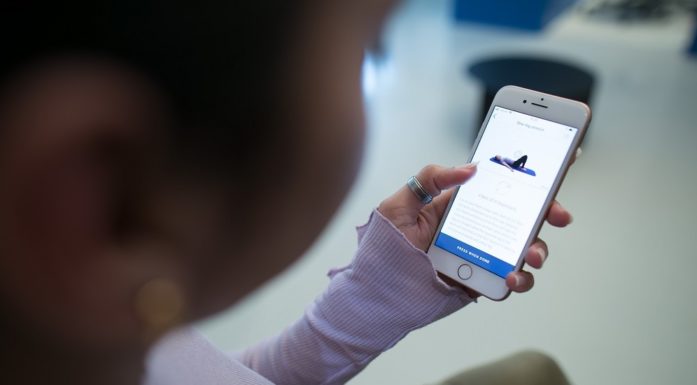Pocket devices a big help to ADHD kids
For children who need help from so-called welfare technology in order to manage their day-to-day lives, it is important that the assistance they get is invisible to others. Many obtain effective help from an app installed on their phones.
Between three and five per cent of primary school-age children have received an ADHD diagnosis, while the occurrence of autism is about 51 in 10,000. The research project Erre mulig? (Is it possible?), coordinated by SINTEF, has been looking into the application of welfare technology for children with these diagnoses.
Facts about the project:
SINTEF has been coordinator of the Erre mulig? project that has run from May 2014 to June 2017. It has been a collaborative effort between the municipalities of Nøtterøy (responsible for the project), Fredrikstad and Tønsberg, the NAV Technical Aids Centre in Vestfold and Østfold counties, the NAV Skills Centre for facilitation and inclusion, and the University College of Southeast Norway. An external reference group has provided technical assistance. The project has been funded by the Regional Research Fund – the Oslofjord fund.
One of the project’s conclusions is that when considering using technology to help these children, it is easy to fall into the “solution-seeking-a-problem” trap instead of adopting a “problem-seeking-a-solution approach”.
“In so far as possible, our ideal is that a technical aid can be installed in everyday technology such as a phone or tablet, so that the kids have no need for specially-tailored systems”, says researcher Øystein Dale who has led the project. “Children usually don’t like to be seen as different from everyone else. They want to use the same stuff as other kids do”, he says.
“However, once it has been installed, we’ve found that this type of technology can be of great benefit to many families”, he adds. Dale explains that the project has been looking at children who manage their day-to-day lives relatively well in spite of their diagnosis.
Help to organise the day
The researchers have focused in particular on technology that helps children to organise their day-to-day lives, and which supports collaboration and communication between home and school. They have monitored the families, schools and the support services that have tested welfare technology in the municipalities of Nøtterøy (which has been responsible for the project), Tønsberg and Fredrikstad.
Many of the families taking part in the project agreed that the mornings in particular were stressful, and that they wanted help in structuring this part of the day. Among other things, the project has tested a number of different calendar-based devices that involve sending out notifications in the form of sounds, texts and/or images to remind children of activities or other tasks they have to do.
Twelve-year-old Tine, who has been diagnosed with ADHD, was one of the children described in the report. Tine needs a lot of help from her parents, and the aim was to encourage her to become more independent. The key element of the digital system was to help Tine remember to take her medication at the right time, get to school on time and to establish better lines of communication with her school.
Tine agreed with her parents and her teacher that a calendar-based system could be installed on her mobile phone. She was sent reminders about things she had to do during the day by both her parents and teachers. The phone hooted like a car horn every time a notification arrived. Tine had chosen this sound herself. Her parents were able to check whether or not she had followed up on her messages.
It emerged that it was important not to send too many notifications because Tine found this to be a nuisance. On the other hand, she was very proud that she had learned how to use the device, and how to enter her own appointments and symbols.
Individual supervision essential
“Many people regarded these calendar-based notifications as very useful”, says Dale. “Kids can spend a lot of energy in remembering things. One of them said ‘now I only have to write it on my smart phone, then I can forget it and the phone will remember for me’”, he says.
“We’ve seen how welfare technology can help make people’s day-to-day lives easier, but it’s very important to make a good assessment of the needs of both the child and the family”, says Dale. “There’s no blueprint for how to design welfare technology”, he says, pointing out that there is enormous variation in how children with autism and ADHD function.
This of course makes it easier to introduce technology in situations where the child first feels that he or she has an unmet need, and then becomes motivated and experiences the technology as an improvement in his or her everyday life. It is also an advantage if the child is provided with choices.
“We see that children with similar challenges and life situations nevertheless respond differently to the same type of technology applied to the same tasks”, says Dale. “Something that works well for one child, will not necessarily work for another”, he says.
Technology doesn’t necessarily suit everyone. One of the children experienced the reminders to do things as irritating. He would rather have his parents remind him. Some of the specialists who took part in the project said that there was too much focus on the technology, and not enough on assessing the problem.
The researchers recommend that the need for making time for training and follow-up should not be underestimated. It is important to start with a realistic attitude using specific and well-constrained technology, which can then be expanded later.
Municipalities need more knowledge
The municipalities have local responsibility for following up the use of welfare technology and technical aids, with assistance from the NAV Technical Aids Centre. The researchers have found that municipalities need more knowledge about services involving tailored welfare technologies, and about how such technologies can be used to support children and young people with ADHD or autism. This also applies to the adaptation and use of everyday technologies.
Before purchasing something new, it is important to investigate what kind of technology the school, the child and the family are already using. It may be the case that everyday devices such as phones, tablets and tools already used by the school can continue to be used if they are adapted correctly. This will make it unnecessary to purchase new equipment.
“Traditionally, municipalities have focused mainly on elderly people when it comes to investment in welfare technology”, says Dale. “Things are changing, but the fact that this is a new development can explain why municipalities need to be more aware about the use of welfare technology for younger users”, he says.





